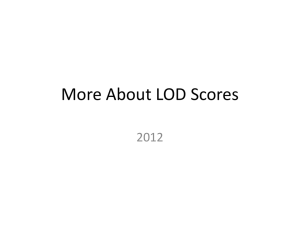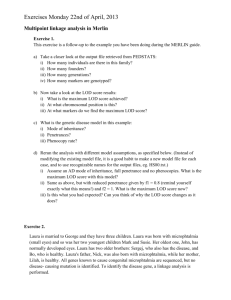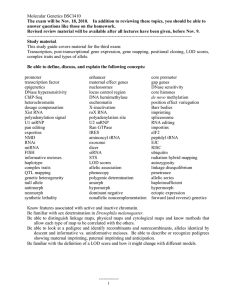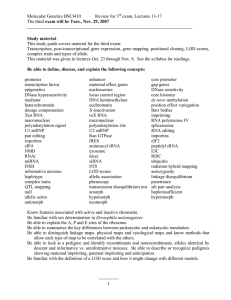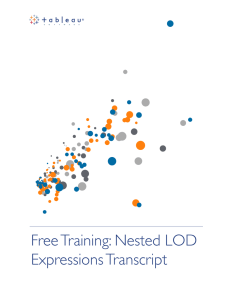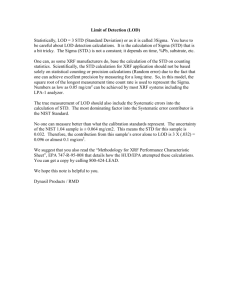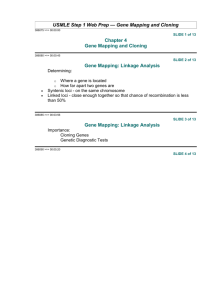Training Video: Aggregation and Replication with LOD Expressions Transcript
advertisement
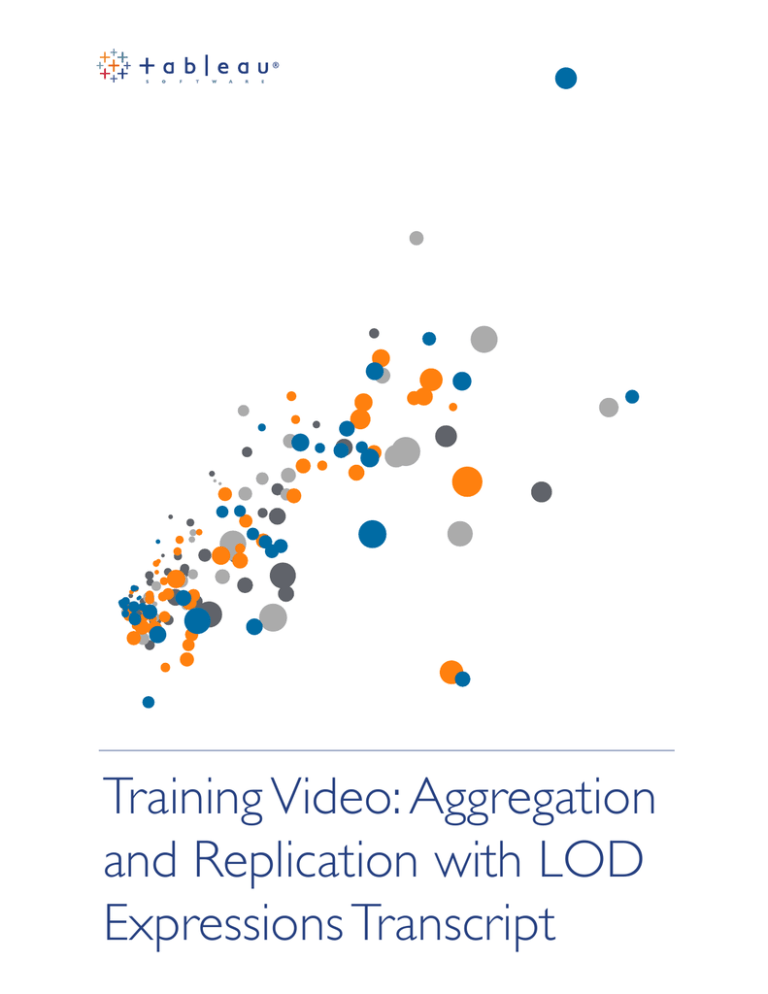
Training Video: Aggregation and Replication with LOD Expressions Transcript Welcome to this video on the Aggregation and Replication behavior of Level of Detail Expressions. This video is intended to be a conceptual explanation of certain deeper aspects of LOD Expressions. To learn the fundamentals, please see the video Introduction to LOD Expressions. Aggregation or Replication of Results As established in previous videos, the Level of Detail of the view determines the number of marks drawn in the visualization. If a calculation has a different Level of Detail, something needs to be done to reconcile the difference. This can be seen most easily with FIXED. FIXED level of detail expressions compute values using the specified dimensions without reference to the view level of detail. Because a FIXED LOD Expression is independent of the view’s LOD, the results may be either “below” (that is, more granular than) or “above” (that is, more aggregated than) the LOD that established the marks on the sheet. FIXED – Aggregated Results If the LOD Expression’s results are more granular than the view LOD, such as in this example, the values from the LOD Expression are aggregated to create the view. • Here, the LOD of the view is simply Segment, but the LOD Expression was fixed at a more granular level of both Segment and Category. • The LOD Expression’s values for each category are aggregated into a single value per segment to be displayed in the view as the result. • If we pre-emptively wrap a level of detail expression in an aggregation when we create it, Tableau will use the aggregation specified rather than choosing one for us when that expression is placed on a shelf. • Here, for example, we want the Average per Category sale, so while we summed the sales inside the LOD Expression, we want the results to be displayed as an Average. • This arrow diagram illustrates the process schematically, showing the value of the LOD Expression computed at a lower level than the Viz LOD then being aggregated back up to be displayed at the Viz LOD. FIXED – Replicated Results • If the dimension declaration is less granular (more aggregated) than the view, the values from the LOD Expression are replicated to create the view. • Here, the LOD of the view is both Category and Segment, but the LOD Expression was fixed at a less granular level of just Segment. • The LOD Expression’s values for each segment are replicated for each Category within a segment to be displayed in the view • In this instance, wrapping the expression in an aggregation isn’t necessary, but since the view may change, it doesn’t hurt to do so. • When no aggregation is needed (because the expression’s level of detail is coarser than the view’s), the aggregation we specified is ignored. © 2003-2014 Tableau Software. All Rights Reserved • This arrow diagram illustrates the process schematically, showing the value of the LOD Expression computed at a higher level than the Viz LOD then being replicated to be displayed at the Viz LOD. FIXED – Disjoint Results A final scenario is if the LOD Expression’s dimensions are entirely disjoint from the dimensions in the view. • In this instance, an intermediate step is calculated behind the scenes, whereby the LOD Expression’s value is replicated for each combination of LOD Expression/LOD of the view, then aggregated to the level of the view. • This is also the behavior for disjoint Nested LOD expressions, which will be covered in more detail later. INCLUDE INCLUDE level of detail expressions compute values using the specified dimensions in addition to whatever dimensions in the view. The INCLUDE keyword will almost always yield LOD Expression results that are below Viz LOD and thus need to be aggregated up to be displayed in the view. Establishing what type of aggregation is performed on the LOD Expression’s results can be done in the calculation or on the pill in the view. EXCLUDE EXCLUDE level of detail expressions explicitly remove dimensions from the expression –that is, they subtract dimensions from the view level of detail. The EXCLUDE keyword will almost always yield LOD Expression results that are above the Viz LOD and thus need to be duplicated to be displayed in the view. Tableau will default to show an EXCLUDE LOD Expression pill in the view as ATTR rather than SUM because there is no aggregation happening other than what is defined inside the LOD Expression’s aggregate expression. Note that it is also possible to have an LOD Expression match the Viz LOD, in which case the LOD Expression will seem to be an ordinary calculation simply performing the aggregate expression. However, if the viz LOD changes, or the LOD Expression is reused in a different view, the effects of the LOD Expression can be seen. Conclusion Thank you for watching this training video on the aggregation and replication behavior of LOD Expressions. We invite you to continue with next video about Nested LOD Expressions to learn more. © 2003-2014 Tableau Software. All Rights Reserved © 2003-2014 Tableau Software. All Rights Reserved
